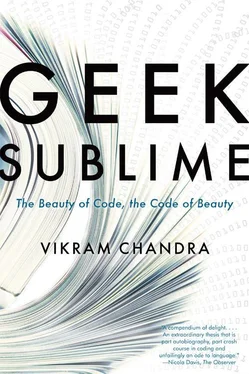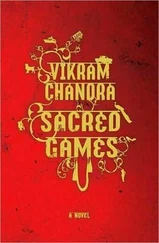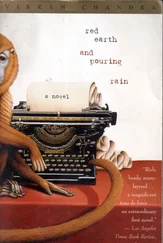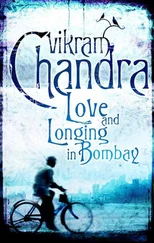from her company?
37
The publication of Radhika Santwanam caused furious controversy. A famous novelist who was the doyen of the social reform movement in the region dismissed Muddupalani as “one who claims to be an expert in music, classical poetry and dance.” He declared:
This Muddupalani is an adultress … Many parts of the book are such that they should never be heard by a woman, let alone emerge from a woman’s mouth. Using sringara [erotic] rasa as an excuse, she shamelessly fills her poems with crude descriptions of sex …
[This is not surprising because] she is born into a community of prostitutes and does not have the modesty natural to women. 38
The colonial government banned the book. The publishers and various scholars protested, pointing out that by these standards you’d have to ban many, many works of premodern Indian literature. Nagarathnamma observed that many premodern “great men have written even more ‘crudely’ about sex.” 39The petitions were dismissed and all copies of the book were destroyed. After Independence, the ban was repealed and a new edition was published in 1952. But the norms about what was natural to women persisted. In the late eighties, Tharu and Lalita’s curiosity was aroused by
the harsh dismissals of Muddupalani’s work in almost every contemporary history … Critic after critic assured us that her work was obscene and simply not worth reading, though many of them had never seen the text. Students of Telugu literature, even ones sympathetic to women, echoed their judgement. 40
Premodern India was by no means a utopia of gender parity and sexual freedom, but many beliefs and practices we may firmly believe to be “traditional” and “eternal” are in fact of very recent manufacture. And modernity is infused with its own virulent strains of misogyny and fear of women’s sexuality. Muddupalani’s “book was no longer banned, but Radhika Santwanam had been decreed out of existence ideologically.” 41After much searching, the editors of Women Writing in India were able to find copies of the printed editions of Radhika Santwanam ; they were never able to locate a palm-leaf manuscript. Muddupalani and her poetry came close to not existing, at least in contemporary awareness. Like women in many other domains across the world, she had been erased; the recovery of Muddupalani was effected, as always, through active efforts toward investigation and reconstruction, through the writing of new histories.

There is a vastness of material that remains to be investigated, an ocean of rivers of stories that remain latent, that need to be reactivated and brought into the present. The corpus of pre-print Indian manuscripts is mind-bogglingly vast and still mostly unexplored. The scholar Dominik Wujastyk writes:
The National Mission for Manuscripts in New Delhi works with a conservative figure of seven million manuscripts, and its database is approaching two million records. The late Prof. David Pingree, basing his count on a lifetime of academic engagement with Indian manuscripts, estimated that there were thirty million manuscripts, if one counted both those in public and government libraries, and those in private collections. For anyone coming to Indian studies from another field, these gargantuan figures are scarcely credible. But after some acquaintance with the subject, and visits to manuscript libraries in India, it becomes clear that these very large figures are wholly justified. 42
The library at Koba in Gujarat, for example, has about 250,000 manuscripts. The Sarasvati Bhavan Library in Varanasi has more than 100,000 manuscripts. “A one-year pilot field-survey by the National Mission for Manuscripts in Delhi, during 2004–2005, documented 650,000 manuscripts distributed across 35,000 repositories in the states of Orissa, Bihar and Uttar Pradesh, and field participants in that project report that they only scratched the surface.” 43For scale, one may compare the collection of the Bibliothèque nationale de France, one of the biggest repositories in Europe, which contains about 40,000 mediaeval manuscripts in Latin and Romance languages. 44
The Indian manuscripts are not fragments; they are full works “typically consisting of scores or hundreds of closely written folios, most often in Sanskrit, and containing works of classical learning on logic, theology, philosophy, medicine, grammar, law, mathematics, yoga, Tantra, alchemy, religion, poetry, drama, epic, and a host of other themes.” 45A very small fraction of the manuscripts have been cataloged — I have heard numbers ranging from 5 to 7 percent, but nobody really knows because there is no reliable count of the total; a rough calculation by Wujastyk shows “half a million catalogued manuscripts out of a minimum total of 7,000,000.” 46There is an urgency to this Big Data problem. Palm leaf — the most common material — can last more than a thousand years under ideal conditions, but it does deteriorate. The ancient and mediaeval texts have survived because the manuscripts have been copied and recopied, but this practice has died out over the last two centuries. “The future survival of this Indian literary and intellectual heritage today depends on the discovery, conservation, preservation and reproduction by digital means of the last generation of Indian manuscripts,” Wujastyk writes. “A back-of-an-envelope calculation based on estimated figures and attrition rates suggests that several hundred Sanskrit manuscripts are being destroyed or becoming illegible every week.” 47

The poet Vidya lived in the seventh century CE. Rajashekhara called her the “Saraswati of Kanara” (a district in South India). We have thirty of her poems in Sanskrit. This is one of them, in Andrew Schelling’s translation:
Black swollen clouds
drench the far
forests with rain.
Scarlet kadamba petals toss on the storm.
In the foothills peacocks cry out
and make love and none of it
touches me.
It’s when the lightning
flings her bright
veils like a rival woman—
a flood of
grief surges through. 48
And also:
“To Her Daughter”
As children we crave
little boys
pubescent we hunger for youths
old we take elderly men.
It is a family custom.
But you like a penitent
pursue a whole
life with one husband.
Never, my daughter,
has chastity
so stained our clan. 49
And — Shilabhattarika lived in the ninth century CE, or perhaps the eleventh. She was perhaps an intimate of the poet-philosopher-king Bhoja, who built a temple to poetry and learning. We have only six of Shilabhattarika’s poems. One of them is among the most famous lyrics in the Sanskrit tradition:
Nights of jasmine & thunder,
torn petals,
wind in the tangled kadamba trees—
nothing has changed.
Spring comes again and we’ve
simply grown older.
In the cane groves of Narmada River
he deflowered my
girlhood before we were
married.
And I grieve for those far-away nights
we played at love
by the water. 50
To think that tomorrow, or perhaps yesterday, a manuscript will disintegrate, has disintegrated, taking with it one more poem by Vidya, one more poem by Shilabhattarika — this is maddening.

Shakti is female, Shiva is male. As Ardhanarishvara, they come together in one androgynous, half-female, half-male form, to signal that the primordial reality is beyond gender. But for the most part, gender seems inescapable, a lens through which we always interpret the world and ourselves. Entire races and nations can be gendered. Sir Lepel Griffin thought that Bengalis were “disqualified for political enfranchisement by the possession of essentially feminine characteristics.” The Indian subcontinent itself has often been figured as female by the West. “The masculine science of the West,” wrote an American in 1930, “has found out and wooed and loved or scourged this sleepy maiden of mysticism.” 51Another observer pointed to the common belief that India’s irrationality required “a stern man who will impose on her the discipline she is too feckless to impose on herself.” 52In Indian editorial cartoons, the United States often shows up as a gun-toting cowboy or large-stepping Uncle Sam (sometimes appropriately sinister, with his halo of drones).
Читать дальше













